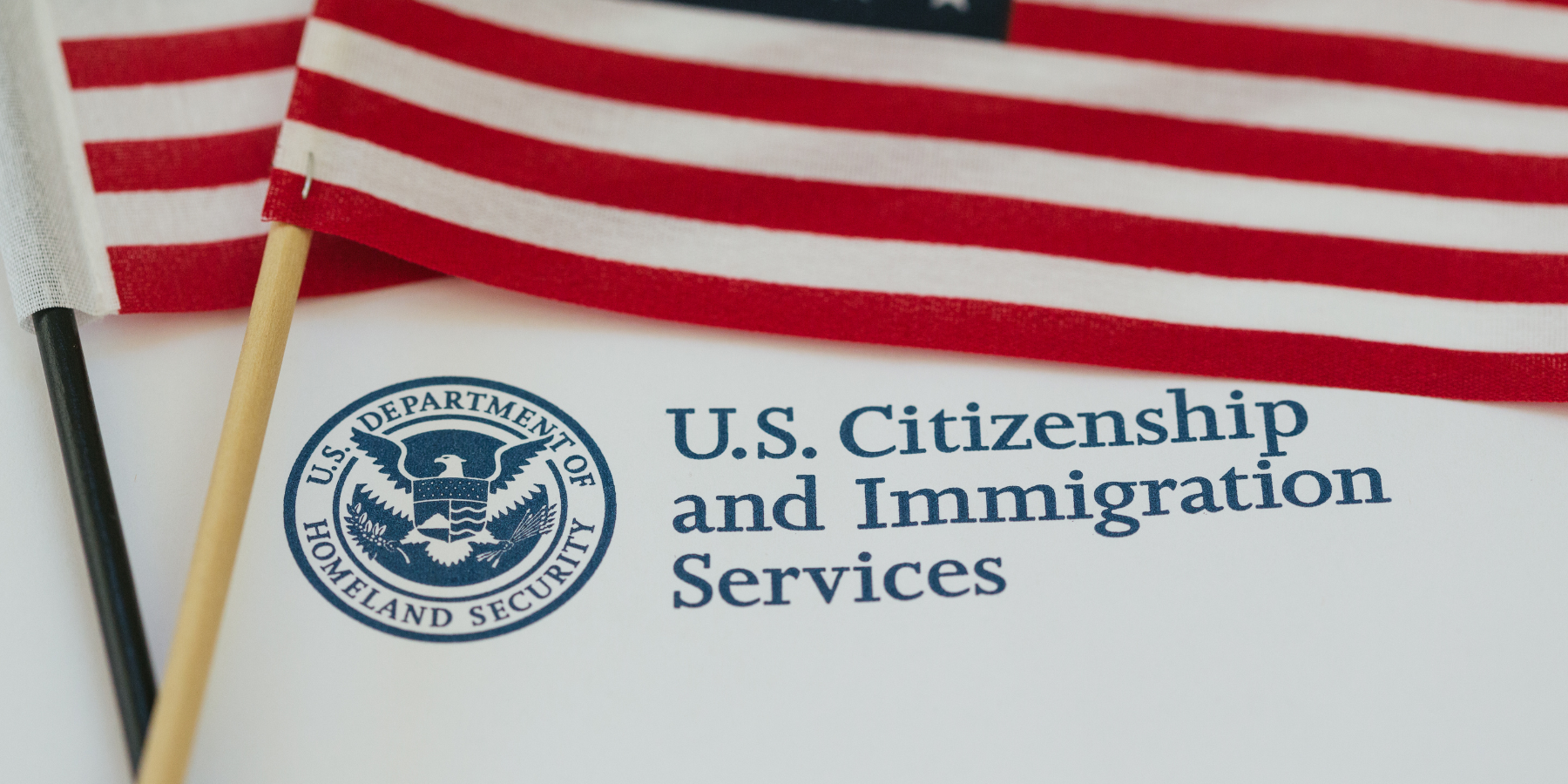
High skill, low freedom: the paradox of legal immigration in the workplace

America has long prided itself on being a land of opportunity; a place where people from around the world come to escape persecution, achieve their dreams, and contribute to the country’s ongoing story of innovation and growth. Legal immigrants have historically played a critical role in that story by filling essential jobs and sharing their expertise. Immigrants have even helped America win Nobel Prizes: since 1901, over one-third of Nobels won by Americans in chemistry, medicine, and physics have been won by immigrants.
And yet, complex and arbitrary immigration laws keep these new Americans on the sidelines, unable to fully contribute to the workforce and their adopted communities.
Limits on innovation
Many immigrants selected for skill arrive on employment-based visas like the H-1B or L-1. These visas typically go to highly skilled professionals, including engineers, doctors, and researchers, but their legal status is tied to a specific employer that sponsors them.
Tying immigration status to an employer means there are many limitations on high-skilled immigrants. For example, it is very difficult for a high-skilled immigrant to switch employers. They are also often barred from working outside their designated field of expertise, reducing the dynamism they may bring to the workforce. Some can’t work more than a set number of hours.
People want the natural freedoms of employment: to work in their field of expertise, leave employers that are incompetent or abusive, pursue their passions on the side, continue their studies, and work for free or part-time on projects that complement their goals and growth. The inability to do any of these things—coupled with the inability to plan their career or family life given the uncertainty around their visa being renewed—is discouraging for ambitious people who came to America to give their all and participate in the advertised American entrepreneurial culture.
Limits on expertise
Many high-skilled immigrants find their expertise sidelined by rigid credentialing barriers in the United States. Despite being selected for their talent, experience, and educational achievements, these individuals often cannot use their skills without undergoing a lengthy re-licensing process, and this onerous requirement extends even to permanent residents.
One of the most striking examples occurs in medicine. Internationally trained physicians—regardless of how they arrive or whether they become citizens—cannot practice as doctors in the United States until they complete an accredited American residency program. These residencies are highly competitive and have limited openings. Even if a doctor gets one of the coveted spots, residency takes three to seven years of working more than full-time in a hospital, and this is after she has already completed this requirement in his or her home country. This repetition of residency is required before a person can even take their qualifying exams.
These duplicative requirements fly in the face of the ongoing American doctor shortage, a looming health and public policy crisis. This crisis will affect Americans in disadvantaged and rural communities the most, while increasing the load on urban facilities as patients will need to drive longer to medical hotspots. Green Card holders—permanent legal residents—and new citizens who have already completed extensive medical training abroad should be able to join in the critical effort to deliver medical care where it is needed.
There are less-onerous methods to ensure doctors who want to practice in America are both qualified and capable. For example, requiring a shorter supervised period in the doctor’s existing field of expertise outside of the residency training system while maintaining the normal licensing exams would relieve the existing bottleneck of residency shortages.
An agenda for an economic engine
If the United States is serious about restoring economic dynamism, border security cannot be the be-all, end-all of immigration reform. The country needs a new approach to legal immigration: one that removes artificial barriers to work, mobility, and entrepreneurship that ultimately benefit all Americans.
The vast majority of Americans want high-skilled immigration. This widespread support suggests that the public recognizes that skilled immigrants help America live up to its ideals and maintain its competitive edge. When immigration laws unnecessarily restrict the contributions of these individuals, America forfeits the advantage of ideas, businesses, and solutions to challenges that immigrants bring to the table.
The Trump administration has proposed revamping the H-1B system to encourage more high-skill immigration. Under a proposed rule, instead of the current random lottery, H-1B recipients would be selected based on wage level for the relevant Standard Occupational Classification code. The concept is that wage would be used as a proxy for skill, and applicants who are higher skill would get priority.
While the proposed changes aim to refine the selection process for these visas, they would do little to simplify the regulatory complexities described in existing legislation, which hinder the mobility and flexibility of H-1B workers regardless of their selection process.
Many of the relevant regulations appear in Title 8 of the United States Code, Section 1184. The requirement that a visa petition must be filed by an “importing employer” (not self-sponsored) is in section 1184(c)(1). This has been interpreted to prohibit most H-1B holders from self-employment or starting their own company unless exceptional structures are established.
One way to change this status quo is to add clear, explicit guidelines under which H-1B holders are allowed to work for themselves or start a company.
By explicitly adding these guidelines, the legal interpretation of H-1B work eligibility would shift: what is now understood as a broad bar on self-employment would become a clear legal allowance. The new language would override previous restrictive interpretations, providing both immigrants and employers with defined, legally recognized pathways for H-1B holders to pursue entrepreneurship under specified conditions.
This update would give H-1B visa holders confidence to start businesses without fear of jeopardizing their status, and would help increase the innovation immigrants bring to the U.S.
USC § 1184(n)(1) establishes that there is no easy way to change employers except by having another employer file a petition, waiting an indefinite amount of time, and hoping it gets accepted. If the employer makes any mistake in the paperwork, or files a duplicate, then the application is void.
In the Code of Federal Regulations, specifically at 8 CFR 214.1(l)(2), it states that H-1B holders who lose their job or quit have a discretionary grace period of up to 60 days—or until the end of their authorized stay, whichever is shorter—to stay in the United States and seek new employment, change status, or prepare to depart the country. Until they receive new authorization, they cannot work during this time.
Creating an easier pathway to changing jobs and increasing the grace period would allow immigrants to more effectively match with employers who would most benefit from their skills.
Additionally, there are currently no straightforward pathways for international STEM graduates of American universities to make a long-term commitment to a career in the United States. Students can apply for an H-1B in the lottery and, if successful, then apply for a Green Card. However, the process of getting a Green Card is a long, winding path; an applicant does not know if or when they will get a Green Card, and does not even know if their H-1B will be renewed. International graduates can generally stay between one and three years; anything beyond that is not certain, meaning graduates cannot make medium-term plans in the country.
The probability of being selected in the H-1B lottery is typically below 20 percent for applicants with a Bachelor’s degree, while those with a Master’s degree or higher face odds of less than 30 percent. For example, in 2025, approximately 340,000 people applied, and 120,000 people were selected.
Then, Title 8 of the United States Code, Section 1152 states that the total number of employment-based Green Cards cannot exceed 7 percent from any one country. That means that any individual’s chance of receiving a Green Card in any given year is at most 7 percent. For countries with large backlogs, such as India and China, this chance is much lower.
This means that the chance of failing to get a Green Card in any given year is 93 percent. The chance of failing every year for 6 years is 0.93^6, or approximately 0.65. The chance of getting a Green Card somewhere within 6 years (not failing every year), therefore, is 1 minus .65, or approximately 35 percent. This assumes you had already beaten the odds to get a visa, and have become eligible to apply for a Green Card.
According to the Economic Innovation Group,
Between undergraduate and graduate degree programs, only 41 percent of international students graduating from American universities between 2012 and 2020 still lived in the country as of 2021, according to an analysis of the National Survey of College Graduates.
More than four out of every five foreign-born bachelor’s degree recipients ultimately move away after graduation. Only 17 percent of bachelor’s degree recipients stay. Half of master’s degree recipients and one-quarter of PhD recipients also leave.
Instead of educating students and then putting them into short-term work loops before they go back home, establishing a program that allows new STEM graduates to stay in the United States—provided they commit at least five years to working in an underserved STEM field, for the public good, or with the government—would offer these graduates the stability they need to make plans while directing their skills where they are most needed.
A forward-looking immigration system should unlock the full potential of high-skilled individuals who choose to build their lives in America. Rather than imposing rigid employment restrictions, policymakers should create opportunities for these immigrants to contribute fully. Embracing their talents and ambitions will help the United States drive innovation, strengthen its workforce, and remain a leader in global economic growth.



 ">
">